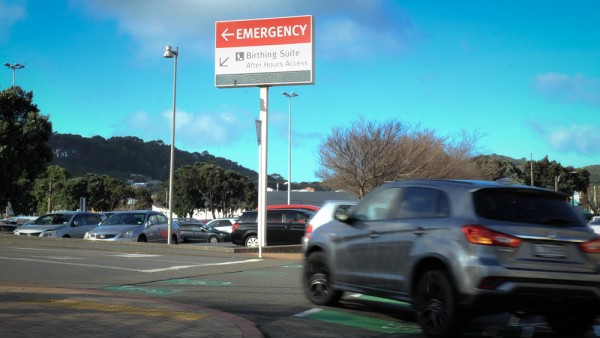References
- Blakely A, Baker M, Wilson N. The maths and ethics of minimising COVID-19 deaths in NZ. Wellington: Public Health Expert, University of Otago, March 23, 2020. https://blogs.otago.ac.nz/pubhealthexpert/2020/03/23/the-maths-and-ethics-of-minimising-covid-19-deaths-in-nz/
- Dhaliwal T. Coronavirus: 16 Southern Alberta emergency physicians sound alarm on potential system overload. Toronto: Global News, March 16, 2020. https://globalnews.ca/news/6683749/alberta-emergency-physicians-coronavirus-health-system-overload/
- Safe Communities Foundation NZ. Home Injuries and Prevention. Auckland: Safe Communities Foundation NZ, Febuary 2016. https://www.safecommunities.org.nz/application/files/5714/8115/5858/Fact_Sheet_4.pdf
- Egerton-Warburton D, Gosbell A, Moore K, et al. Alcohol-related harm in emergency departments: a prospective, multi-centre study. Addiction 2018;113(4):623-32.
- Svensen G, Kool B, Buller S. The burden of alcohol-related presentations to a busy urban New Zealand hospital emergency department. N Z Med J 2019;132(1504):56-66.
- Wilson N, Imlach Gunasekara F, Thomson G. The benefits and harms of alcohol use in New Zealand: what politicians might consider. N Z Med J 2011;124(1336):85-9.
- Thornley S, Kool B, Robinson E, et al. Alcohol and risk of admission to hospital for unintentional cutting or piercing injuries at home: a population-based case-crossover study. BMC public health 2011;11:852.
- Kool B, Chelimo C, Robinson E, et al. Deaths and hospital admissions as a result of home injuries among young and middle-aged New Zealand adults. N Z Med J 2011;124(1347):16-26.
- Nepal S, Kypri K, Tekelab T, et al. Effects of Extensions and Restrictions in Alcohol Trading Hours on the Incidence of Assault and Unintentional Injury: Systematic Review. J Stud Alcohol Drugs 2020;81(1):5-23.
- Fell JC. Approaches for reducing alcohol-impaired driving: Evidence-based legislation, law enforcement strategies, sanctions, and alcohol-control policies. Forensic Sci Rev 2019;31(2):161-84.
- Siegfried N, Parry C. Do alcohol control policies work? An umbrella review and quality assessment of systematic reviews of alcohol control interventions (2006 – 2017). PLoS One 2019;14(4):e0214865.
- Anderson P, Chisholm D, Fuhr DC. Effectiveness and cost-effectiveness of policies and programmes to reduce the harm caused by alcohol. Lancet 2009;373(9682):2234-46.
- Expert Advisory Group on solutions to child poverty in New Zealand. How Substance Abuse, Problem Gambling and Family Functioning Impact on Child Poverty. Wellington: Office of the Childrens’ Commissioner, August 2012. Accessed March 21, 2020. https://www.occ.org.nz/assets/Uploads/EAG/Working-papers/No-20-How-substance-abuse-problem-gambling-impact.pdf
- Kahler CW, Borland R, Hyland A, et al. Alcohol consumption and quitting smoking in the International Tobacco Control (ITC) Four Country Survey. Drug Alcohol Depend 2009;100(3):214-20.
- Wilson N, Weerasekera D, Kahler CW, et al. Hazardous patterns of alcohol use are relatively common in smokers: ITC Project (New Zealand). N Z Med J 2012;125(1348):34-41.
- Elvik R. A before–after study of the effects on safety of environmental speed limits in the city of Oslo, Norway. Safety Science 2013;55:10-16.
- Grundy C, Steinbach R, Edwards P, et al. Effect of 20 mph traffic speed zones on road injuries in London, 1986-2006: controlled interrupted time series analysis. BMJ 2009;339:b4469.
- Liebrenz M, Bhugra D, Buadze A, et al. Caring for persons in detention suffering with mental illness during the Covid-19 outbreak. Forensic Science International: Mind and Law 2020:(Journal pre-proof).
- Kinner S, al e. Prisons and custodial settings are part of a comprehensive response to COVID-19. The Lancet: Public Health 2020:DOI:https://doi.org/10.1016/S2468-667(20)30058-X.
About the Briefing
Public health expert commentary and analysis on the challenges facing Aotearoa New Zealand and evidence-based solutions.
Subscribe

Public Health Expert Briefing
Get the latest insights from the public health research community delivered straight to your inbox for free. Subscribe to stay up to date with the latest research, analysis and commentary from the Public Health Expert Briefing.

